How to Plan an Outdoor Marijuana Garden
The ultimate blueprint on how to plan an outdoor cannabis garden in ten easy steps. Discover everything you need to know to get your outdoor marijuana grow on the right track.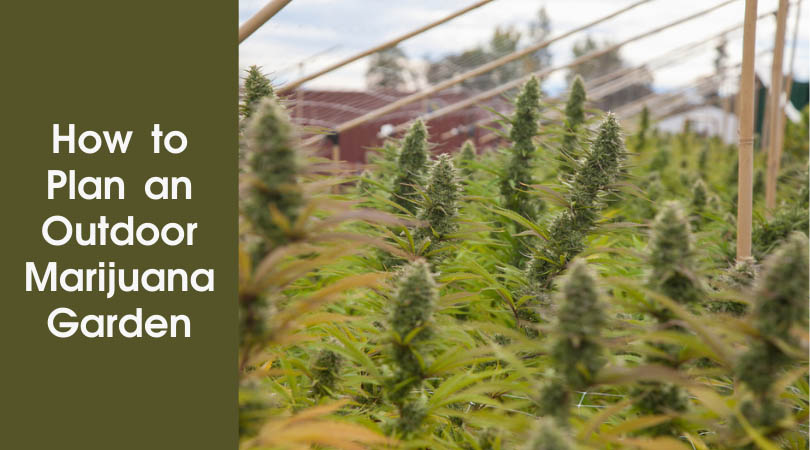 There’s no better opportunity to grow weed outdoors than when days become longer, and the sun’s radiant glow intensifies.
There’s no better opportunity to grow weed outdoors than when days become longer, and the sun’s radiant glow intensifies.
As the beauty of spring unfolds, mother nature beckons you to sow the seeds for this year’s outdoor cannabis season. Free from HID lighting and controlled environments, growing marijuana outdoors allows you to grow weed naturally.
Before you sprout your feminized or autoflowering seeds, however, you must clear the first hurdle — learn how to plan an efficient outdoor cannabis garden.
From understanding your local environment to prepping your garden for the long summer months ahead, we’ve got you covered with this beginner’s guide on setting up the perfect outdoor garden for cannabis plants.
Let’s begin!
Why You Need to Plan Your Outdoor Marijuana Garden
In life, it’s rare to succeed in anything without proper planning.
The same can be said with growing weed outdoors, which is, you might not reach your potential without a clear strategy. In this case, a clear plan is to craft a blueprint on your proposed outdoor marijuana patch.
Although we don’t mean to scare you, growing cannabis in a poorly designed garden leads to:
- Low yields
- Pest and disease outbreaks
- Wasted materials
- Unhealthy marijuana plants
- Wasted time
As you can see, you won’t be happy with the results mentioned above.
Although it takes a bit of time and effort, learning how to plan an outdoor cannabis garden will lead to a successful growing season with numerous benefits.
The Benefits of Planning an Outdoor Cannabis Garden
Ready to reap the rewards of planning an outdoor weed garden? Here’s a list of benefits that you’ll realize before and after harvest:
- Massive yield
- Vigorous cannabis plan
- Less personal stress
- Connoisseur-grade buds
If you’re like us, you’ll agree that these benefits are well worth your time. Therefore, never cut corners when it comes to growing weed outdoors.
Instead, take the time to read this guide to ensure you maximize your crop — growing season after growing season.
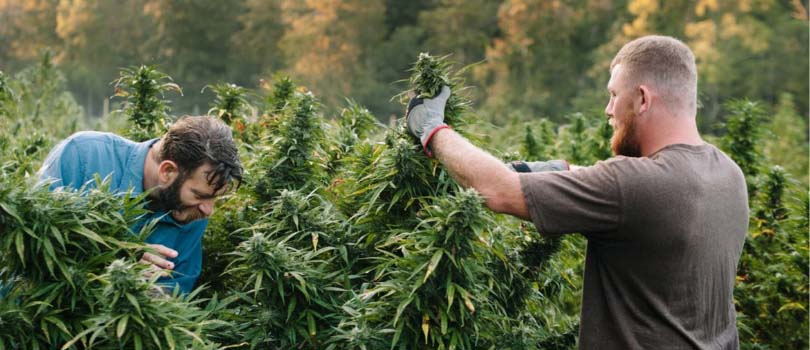
A successfully planned outdoor cannabis garden can bring in massive yields.
How to Build An Outdoor Cannabis Garden in Ten Easy Steps
Before we detail the ten fundamental steps to build an outdoor cannabis garden, let us mention the golden rule of outdoor weed farming — no two outdoor weed gardens are created equal.
In other words, your microclimate dictates everything, and it’s up to you to take the time to understand what your garden needs to thrive. The steps below are merely a guideline to follow during your journey in building the ultimate outdoor weed garden.
As long as you are proactive in your research — you will be a successful marijuana farmer.
Step 1: Determine Your Local Climate
Your local climate dictates everything that you do in your outdoor marijuana garden. If you don’t believe us, here’s a list of everything that depends on your local climate:
- Irrigation rates
- Length of the growing season
- Maximum yield
- Nutrient requirements
- Indigenous beneficial fungi/bacteria
- Light availability
- Plant vigor and growth rates
As you can see, we weren’t kidding about how impactful your local climate is regarding growing cannabis outdoors, especially when you finish reading our Outdoor Grower’s Almanac. Remember, climate merely describes your local area’s weather patterns.
However, how can you determine your local climate? Aside from going outside and experiencing it, you can head over to a reliable climate zone map, to decide on your primary climate.
Are you in a Mediterranean or humid subtropical zone? How about humid continental or steppe? Once you know your primary climate, it’s time to determine your local climate.
You can determine your local climate by finding your area’s:
- Elevation
- Average rainfall
- Prevailing winds
- Local topography
- Average seasonal temperatures
Once you’ve discovered these essential pieces of information, you will have a clear picture of your local climate.
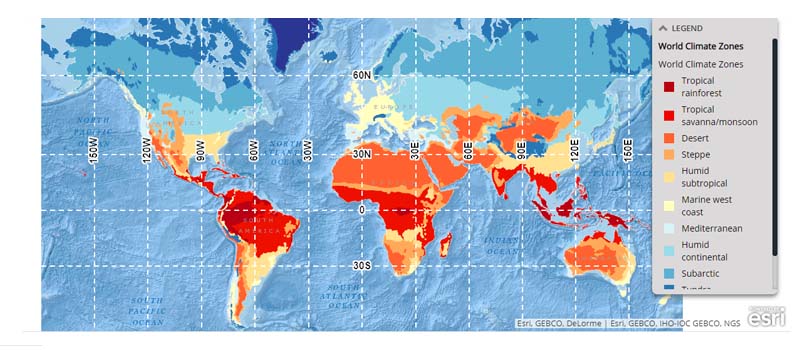
A climate zone map can help you determine your local climate.
Step 2: Choose the Best Cannabis Seeds For Your Region
Now that you understand what climate you live in, it’s time to pair your environment with a suitable cannabis strain.
For example, you live in Southern California, and your local zone rarely sees natural rainfall. Furthermore, your local area experiences severe wind events during September — the peak bloom month for marijuana plants.
With this example in mind, you’ll want to find a sturdy marijuana strain that can handle ample abuse from mother nature.
As you can see, you must find the best cannabis seeds for your specific region. Therefore, here’s a brief wrap-up of ideal cannabis traits in regards to select environmental conditions.
Top Cannabis Traits When Growing In a Subtropical Climate
Subtropical climate zones are characterized by ultra-hot and humid summers and cold to freezing winters.
Therefore, you must find autoflowering or feminized cannabis seeds that:
- Flower within 8-weeks
- Can handle high heat and humidity
- Resistant to fungal and bacterial outbreaks
Top Cannabis Traits When Growing In a Mediterranean Climate
Mediterranean climates are characterized by a hot and dry summer and a mild winter with minimal precipitation.
Therefore, you must find autoflowering or feminized cannabis seeds that:
- Flower within 9-12-weeks
- Can handle scorching heat
- Can withstand high winds
- Drought Tolerant
Top Cannabis Traits When Growing In Humid Continental Climate
Humid continental zones are characterized by warm and humid summers and freezing winters. Furthermore, humid continental zones are prone to four distinct seasons.
Therefore, you must find autoflowering or feminized cannabis seeds that:
- Flower within 8-weeks
- Can handle high heat and humidity
- Can withstand cooler temperatures near the end of flowering
- Resistant to fungal and bacterial outbreaks
Step 3: Find the Ideal Spot for Your Cannabis Garden
Now that you have the perfect cannabis seeds for your specific climate — it’s time to find the ideal spot (aka the sunniest spot) to build your weed farm.
Here’s a handful of additional considerations to take into account when choosing a suitable area to grow cannabis outdoors:
- Is there water access nearby?
- How much sun does the area receive?
- Is it visible to neighbors or passersby?
- Are there natural light barriers, such as trees or buildings?
- Are there nearby lamps that illuminate your garden at night?
- Is your area prone to pests such as deer, gophers, and rabbits?
- Can the area be protected from thieves or pests?
- Does the area provide natural windbreaks, such as hedges or bushes?
By using this questionnaire, you’ll have a better understanding of what the ideal spot for your outdoor weed crop looks like.
Next, it’s time to break out the measuring tape.
Whether you decide to grow weed in your backyard, front yard, or balcony, you must first determine the amount of space you’re working with.
Now that you’ve located the perfect spot to grow weed outside, it’s time to head over to step four.
Step 4: Determine the Number of Cannabis Plants You Want in the Garden
Beginners are always surprised how massive outdoor marijuana plants grow.
Unlike growing weed indoors, outdoor cannabis plants grow like they are on steroids. Whether it’s the natural sunlight or deep root space, the great outdoors produces cannabis trees.
Therefore, you must determine the number of cannabis plants you want in the garden. If you don’t find an appropriate number, you may discover underutilized space in the garden or a literal cannabis jungle.
To avoid extremes, it’s much easier to calculate how many cannabis plants will fit in your outdoor cannabis garden. Here’s the spacing for both feminized and autoflowering strains to give you a better idea of how many cannabis plants you can fit into the garden.
Spacing For Feminized Marijuana Strains
- 3-5-feet or 1-1.5 meters
Spacing For Autoflowering Marijuana Strains
- 1-3-feet or 0.3-1 meter
However, the spacing mentioned above is not set in stone. In other words, your choice of cultivation technique will influence the final size. Methods, such as ScrOG, LST, super cropping, and so forth, will dictate the overall size and shape of the marijuana plant.
Great! Now that you know how many plants to grow in your outdoor garden let’s move along to step five.
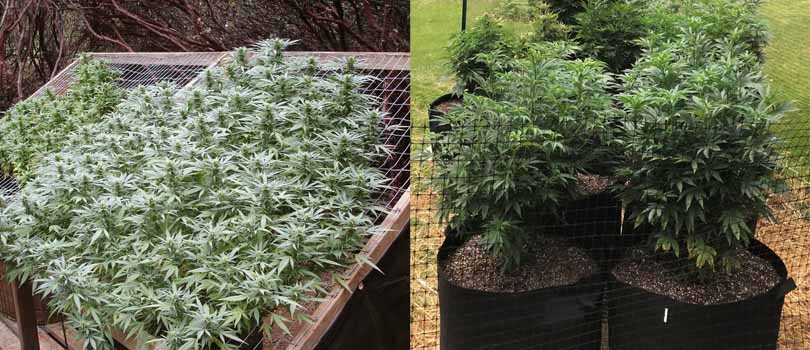
Your cultivation technique will determine how many plants you can grow in a space.
Step 5: Decide Between Growing Weed in the Ground or Containers
Now that you know how many marijuana plants to grow, it’s time to decide if you’ll grow them in the ground or containers.
Do not take this decision lightly as it will determine where you marijuana plants will live during their life cycle.
Let’s take a look at the pros and cons of both direct-planting and containers:
Pros and Cons of growing weed directly in the ground:
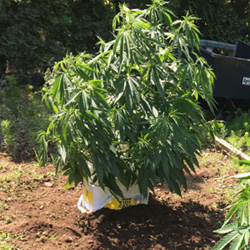
Pros:
- Unrestricted root growth
- Increases drought tolerance
- Naturally-occurring beneficial bacteria and mycorrhizae
- Natural nutrient
- Prevents pest, disease, bacterial, and fungal outbreaks
- Reduced costs
Cons:
- Can’t move the plant
- May grow too big
- Less discrete
Pros and Cons of Growing Weed in Containers:
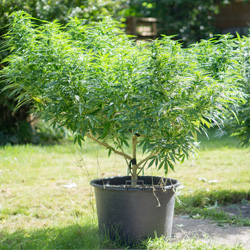
Pros:
- You can move plants
- Limits the size of plants (stealth growers)
- Create your own soil mix
- Monitor EC and pH (optional)
Cons:
- Root growth is limited
- Drought resistance decreases
- Expensive
- Nutrient demand increases
- Easier to steal
Your decision of whether to grow cannabis directly in the ground or containers will influence step six.
Step 6: Buy Nutrient-Rich Soil or Soil Amendments
Next, it’s time to compose your soil.
Unless the soil in your yard is packed with nutrients, you’ll need to build the perfect soil. When we say ideal soil, it means it contains essential nutrients and loamy consistency.
You have two options when it comes to the soil for your cannabis plants:
- Buy garden specific soil
- Build soil with nutrient-packed amendments
The first option is extremely convenient and recommended for new growers. Cannabis brands such as Fox Farms provide pre-made soil that’s full of nutrients. However, the convenience of store-bought soil comes at a price.
The second option requires a bit more know-how in terms of plant nutrition. However, a small amount of research goes a long way. Soil amendments, such as bat guano, worm castings, and fish meal, are filled with macro and micronutrients that plants crave.
Building your own soil profile with amendments allows you to customize the nutrient spectrum and gives you more control over your garden. Alternatively, bagged soil is ready-made and only requires you to pour it into a container or mix it into the ground.
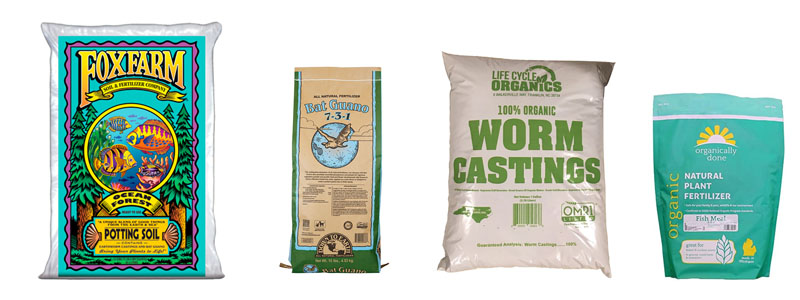
You can buy ready made soil or build your own soil profile using amendments.
Step 7: Construct Protective Measures for Your Garden
Next, it’s time to build protective measures for your outdoor marijuana garden.
Thousands of outdoor marijuana plants fall victim to thieves and pests every growing season. If you don’t want to become a victim, you must implement a security strategy.
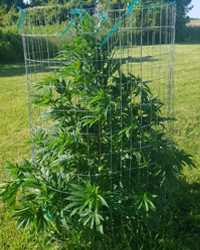
Here are a few ideas on how to protect your outdoor marijuana patch from specific threats.
- Build a fence around the garden to prevent thieves and deer
- Install underground barriers to prevent gophers
- Place motion-activated flood lighting around the perimeter
Remember, protective measures are location dependent. If you live in a region where gophers or deer aren’t a threat, you can adopt other defensive strategies.
Step 8: Incorporate an Irrigation Strategy
An irrigation strategy is a fancy way of saying how you’re going to water your weed plants. Will you hand water or use a full-blown drip irrigation system?
In general, the more cannabis plants you grow outdoors — the more convenient it is to use an automated drip system. Alternatively, a drip system may be overkill if you grow a single cannabis plant.
We’ve grown our fair share of marijuana outdoors and can safely say it’s a buzzkill to hand water multiple plants throughout the day. Ultimately, your budget and the number of marijuana plants determines your irrigation strategy.
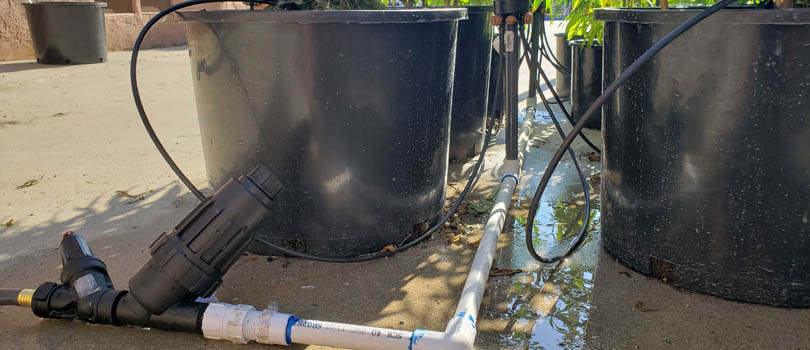
You can set up a drip irrigation system like this one here or simply water by hand.
Step 9: Plan an IPM Strategy
With so many benefits of growing weed outdoors, there are a few notable downsides. The primary issue that many growers face outdoors is the prevalence of pests and diseases.
Unlike indoor gardens, outdoor gardens are exposed to the natural world. Therefore, you will find grasshoppers munching on leaves or aphids along the stems of your prized genetics.
From powdery mildew to botrytis, outdoor gardens aren’t free from common diseases. Since these issues can destroy your garden, you must take preventative steps to ensure your marijuana garden’s safety through a sound IPM strategy.
Here’s a list of proven IPM strategies to incorporate into your outdoor marijuana garden:
Buy Resistant Cannabis Genetics
One of the most critical but often overlooked methods within an IPM strategy is a cannabis plant’s genetics. By picking a cannabis strain with resistant genetics, the plants will naturally deter common issues, such as:
- Insects
- Bacteria
- Fungi
- Viruses
Use Organic Insecticide, Bactericide, and Fungicide Sprays
Another excellent option that should be a part of your IPM strategy is organic sprays. Organic sprays take on multiple roles, such as pesticide, fungicide, and bactericide.
The benefit of using organic sprays is they deter pests and diseases without leaving harmful residue on cannabis flowers.
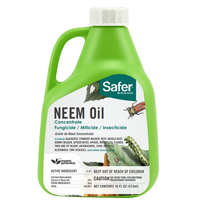
Two examples of organic sprays are:
- Neem oil spray
- Regalia spray
There’s nothing worse than having to deal with a pest infestation or disease outbreak during the middle of the growing season.
By incorporating an IPM strategy, you’ll save yourself from a massive headache once the growing season begins.
Step 10: Wait for the Growing Season to Begin
Now that your outdoor cannabis garden is prepared, it’s time to wait for the outdoor season to begin.
However, when does the outdoor growing season begin? To learn more about the outdoor growing season, head over to our in-depth article — The Outdoor Grower’s Almanac.



